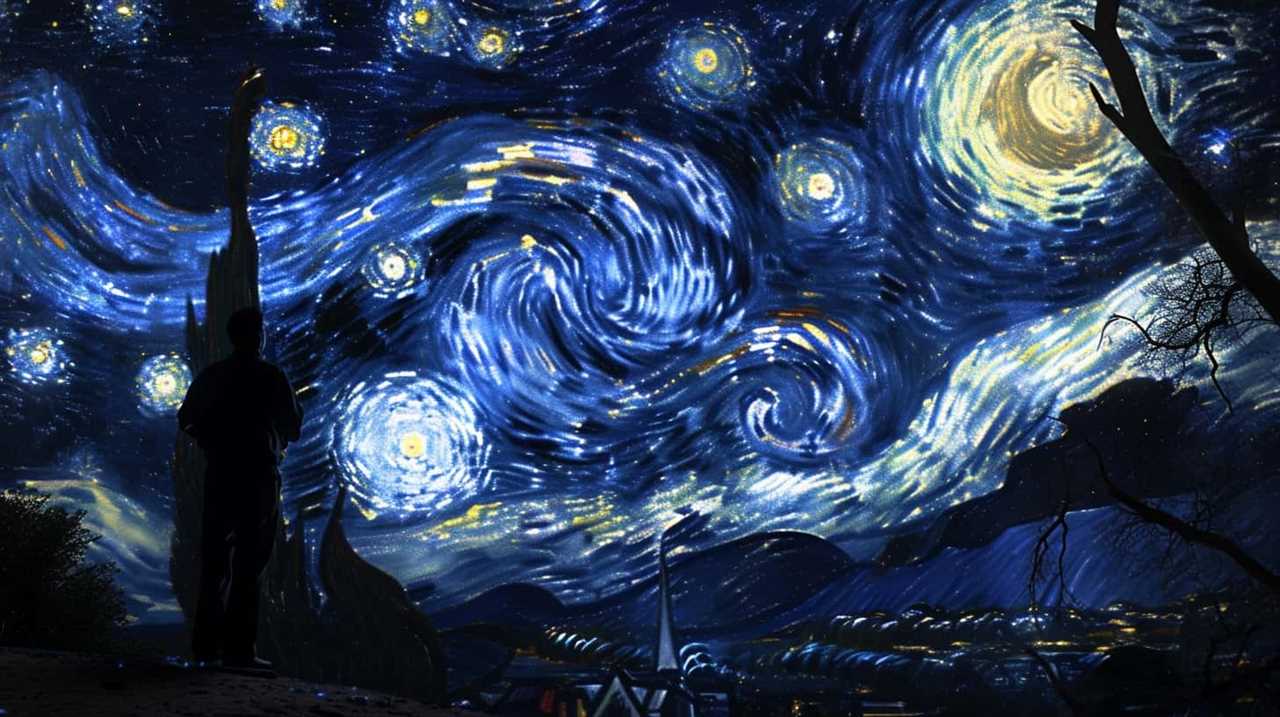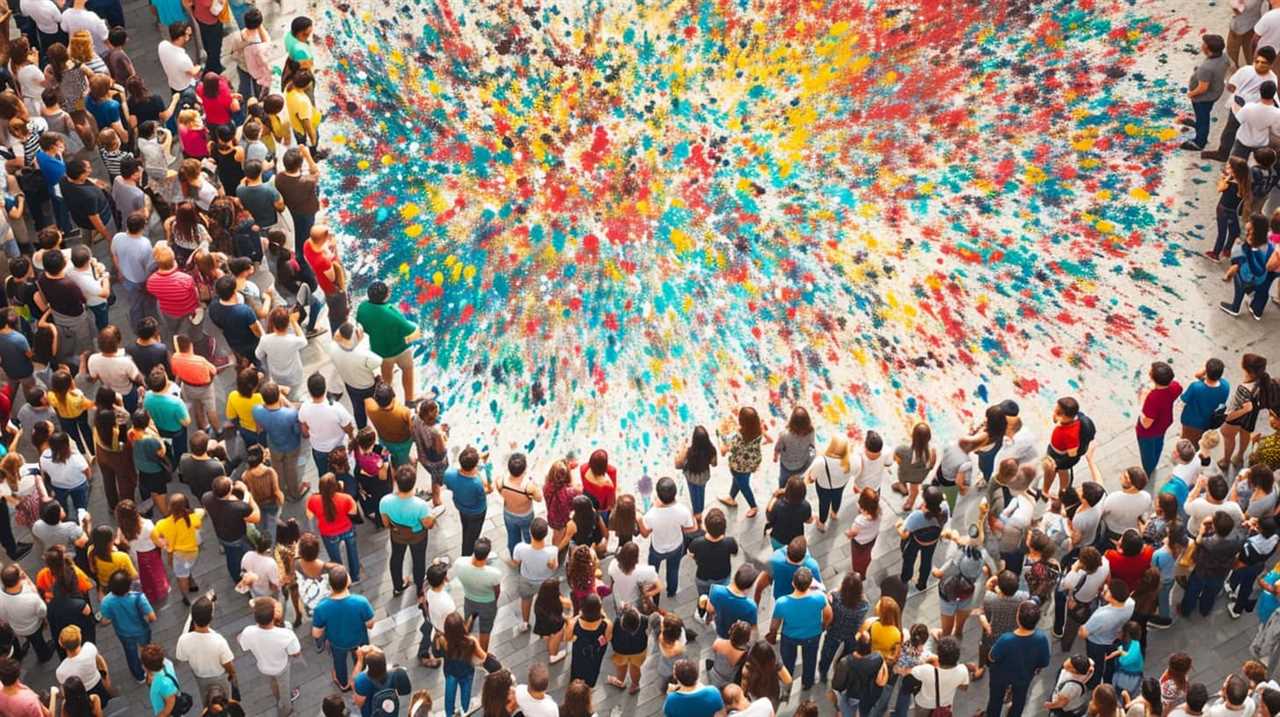Throughout history, the strokes of renowned artists have influenced the world we live in, making a lasting impression on our shared awareness.
In this compilation of 12 iconic quotes on art’s influence in history, we delve into the profound insights of visionaries who understood the transformative power of art.
From Leonardo Da Vinci’s musings on the boundless potential of creativity to Frida Kahlo’s belief in art as a voice for the marginalized, these quotes provide a glimpse into the minds of those who dared to challenge conventions and redefine our understanding of beauty, emotion, and societal norms.
Join us as we embark on a journey through the annals of art history, exploring the profound impact it has had on shaping our world.
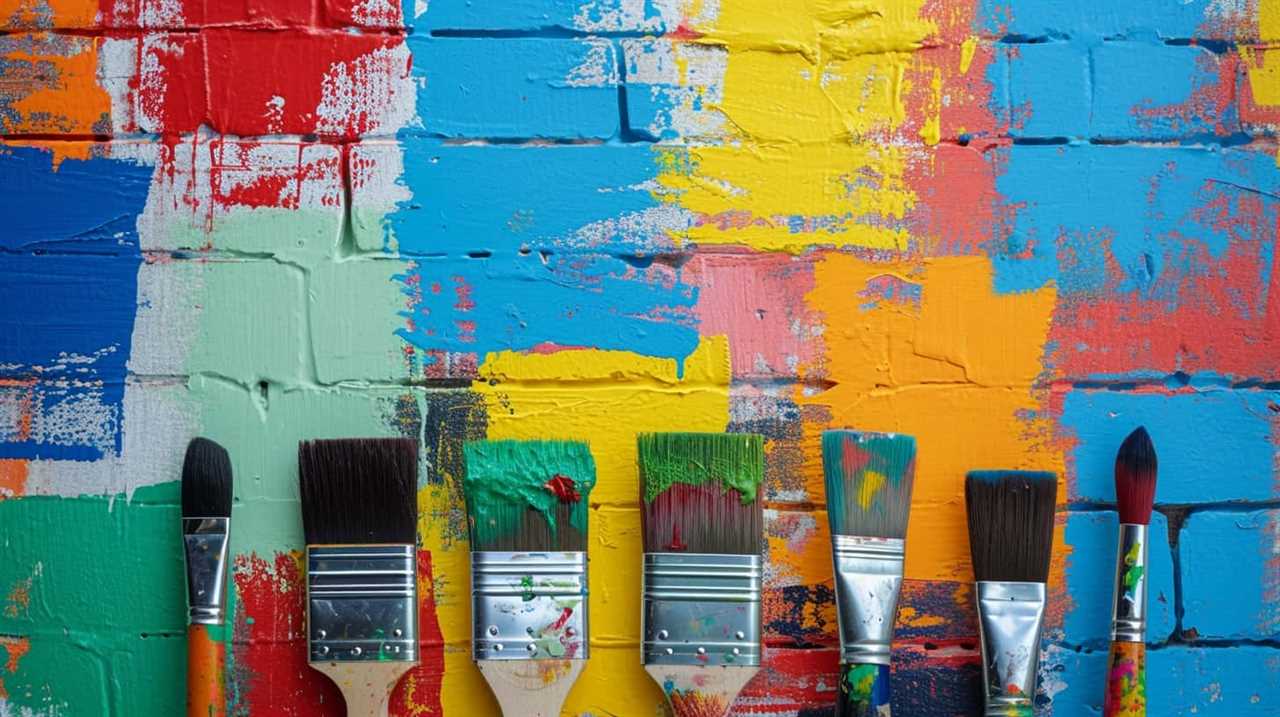
Key Takeaways
- Artists like Leonardo Da Vinci, Van Gogh, Picasso, and Frida Kahlo used art as a platform for personal expression and challenging traditional norms.
- These artists have had a significant impact on the art world and have inspired future generations of artists.
- Artists like Georgia O’Keeffe and Salvador Dali explored the relationship between art and nature, emphasizing its beauty and power.
- Artists such as Andy Warhol, Banksy, and Yoko Ono used their art to critique society and challenge traditional notions of art.
Leonardo Da Vinci on the Power of Art
Leonardo Da Vinci emphasized the profound impact art has on shaping our world. His understanding of art’s power extended beyond its aesthetic value, recognizing its ability to evoke emotional responses and provoke thought. Da Vinci’s perspective resonated with many artists who followed him, such as Vincent van Gogh and Pablo Picasso, who both embraced the revolutionary nature of art and used it as a platform for personal expression.
Van Gogh’s emotionally charged paintings, like ‘Starry Night,’ captured the intense emotions and struggles he experienced, leaving a lasting impact on the art world. Picasso, on the other hand, pushed the boundaries of art as a revolution by constantly reinventing his style and challenging traditional norms. His artistic impact can be seen in the various periods of his work, from the Blue Period to Cubism.
Artists like Frida Kahlo used their art as a voice for the marginalized, addressing themes of identity, gender, and societal injustice. Meanwhile, Michelangelo’s works, such as the Sistine Chapel ceiling, showcased the permanence of art and its ability to transcend time.
Other artists, like Georgia O’Keeffe, explored the connection between art and nature, emphasizing the beauty and power found in the natural world. Salvador Dali, a prominent figure in the surrealist movement, revolutionized the art world with his unique and dreamlike compositions, influencing subsequent generations of artists.
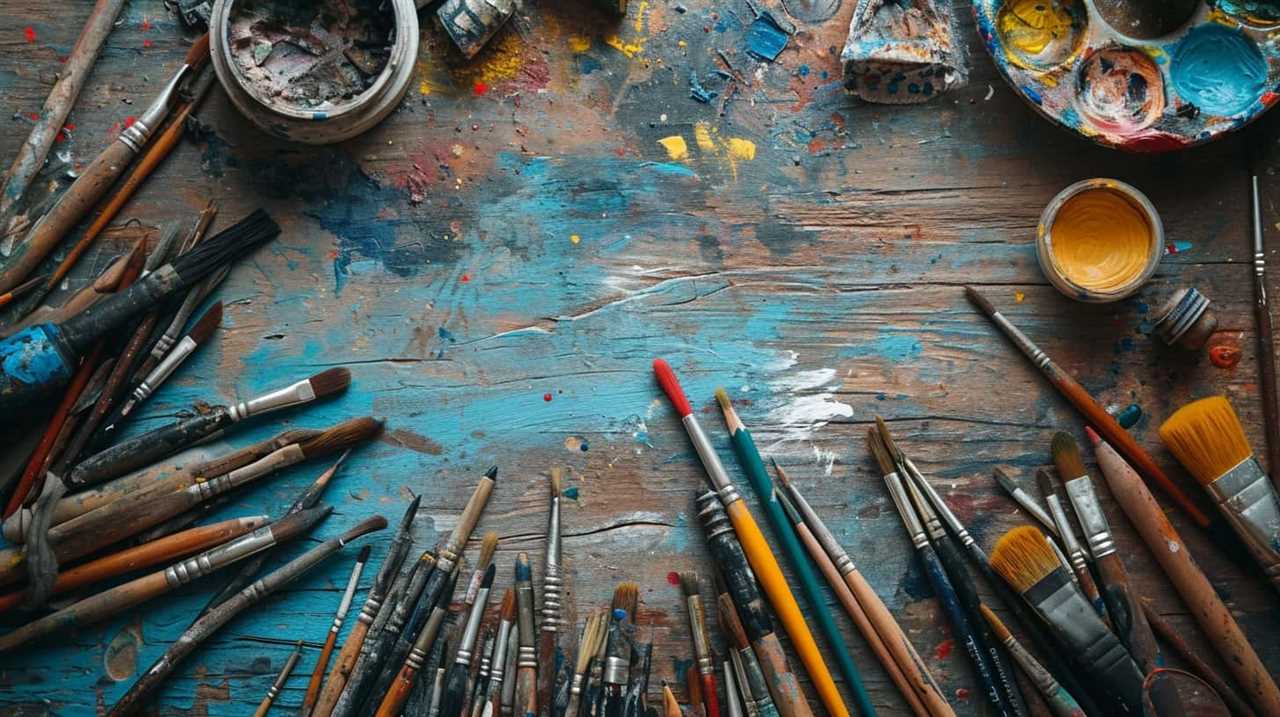
Claude Monet’s impressionist style introduced a new way of capturing the fleeting effects of light and color in nature, while Jackson Pollock’s abstract expressionism pushed the boundaries of artistic techniques and challenged conventional notions of art.
In the realm of pop art, Andy Warhol used consumer culture as a commentary on society, highlighting the impact of mass media and consumerism. His work became a catalyst for art as social critique.
Artists like Banksy took to the streets, using street art as a form of activism and giving voice to the marginalized. Yoko Ono’s conceptual nature of art challenged traditional art forms, encouraging viewers to question the boundaries of what art can be.
Vincent Van Gogh on the Emotional Impact of Art
Van Gogh’s passionate belief in the emotional impact of art resonates with artists throughout history. His artwork is a testament to his ability to convey intense emotions through his brushstrokes and use of color. Van Gogh’s mental state, characterized by periods of depression and instability, had a profound impact on his art. The emotional expression in Van Gogh’s artwork is a reflection of his inner turmoil and struggles.

| Emotion | Artwork | Description |
|---|---|---|
| Loneliness | The Starry Night | Van Gogh’s swirling brushstrokes and vibrant colors evoke a sense of isolation and longing. |
| Despair | The Scream | Van Gogh’s use of bold, jagged lines and dark colors conveys a deep sense of anguish and despair. |
| Hope | Sunflowers | Van Gogh’s vibrant and joyful depiction of sunflowers represents a glimmer of hope amidst his struggles. |
| Passion | The Bedroom | Van Gogh’s use of bold and expressive brushwork reflects his intense passion and fervor. |
| Serenity | Irises | Van Gogh’s delicate brushstrokes and calming color palette evoke a sense of tranquility and peace. |
Van Gogh’s emotional expression in his artwork has had a lasting impact on the art world. His ability to convey emotions so powerfully resonates with viewers, drawing them into his world and allowing them to experience his emotions firsthand. Van Gogh’s mental state undoubtedly influenced his art, serving as a channel for him to express his innermost thoughts and feelings. His art continues to inspire and move audiences, highlighting the enduring power of emotional expression in art.
Pablo Picasso on the Revolutionary Nature of Art
Picasso’s impact on the art world can’t be overstated. His avant-garde approach challenged traditional artistic norms and sparked a revolution in the way art was perceived and created.
Through his innovative use of form, color, and perspective, Picasso shattered the boundaries of what was considered acceptable in art, paving the way for future generations of artists to push the boundaries even further.
His revolutionary nature and artistic genius continue to inspire and influence artists to this day.
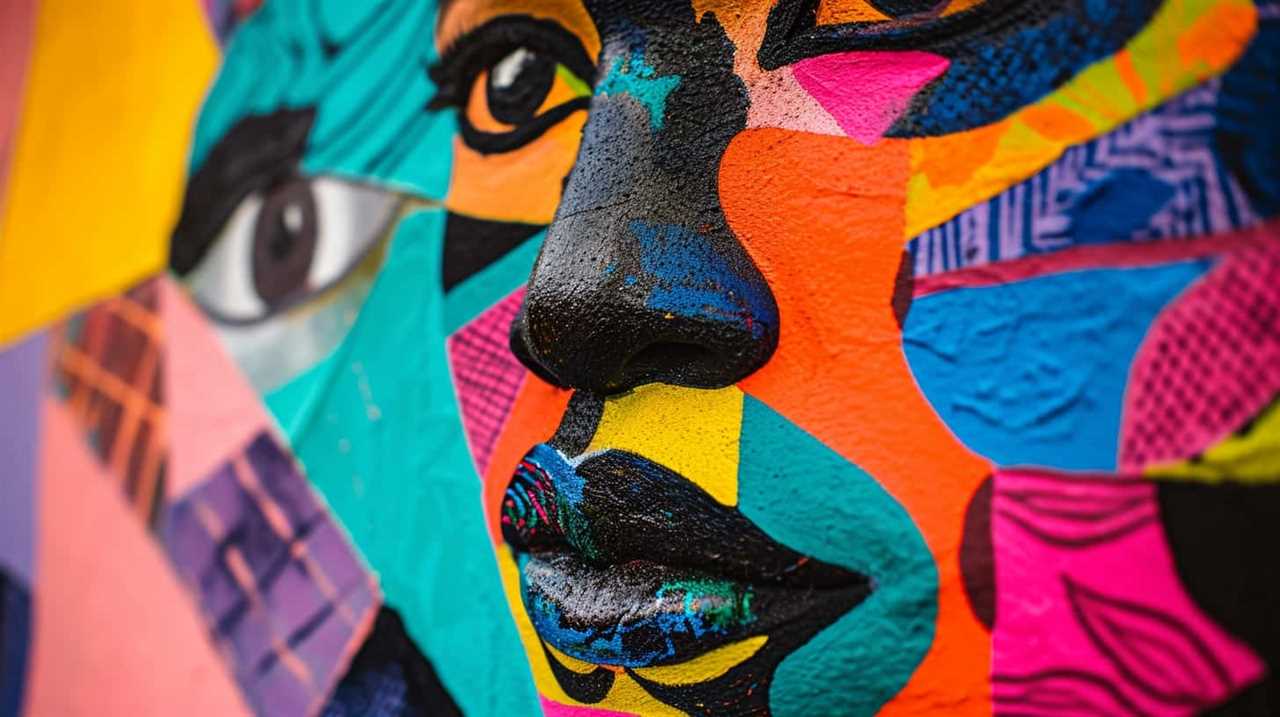
Art as a Revolution
Art has always been a catalyst for revolution, shaping societies and challenging the status quo. Throughout history, artists have used their creative expressions as a means of rebellion, pushing boundaries and sparking change.
Pablo Picasso, one of the most influential artists of the 20th century, understood the revolutionary nature of art. He once famously stated, ‘Art is a lie that makes us realize the truth.’ Picasso believed that art had the power to unveil hidden truths and expose the flaws of society.
By challenging conventional norms and visualizing alternative perspectives, art becomes a tool for social transformation. It ignites conversations, provokes emotions, and inspires action. Whether through paintings, sculptures, or performances, artists have the ability to shake the foundations of society and pave the way for revolutionary ideas.
Art as a rebellion isn’t just a form of self-expression; it’s a call to dismantle oppressive systems and build a better world.
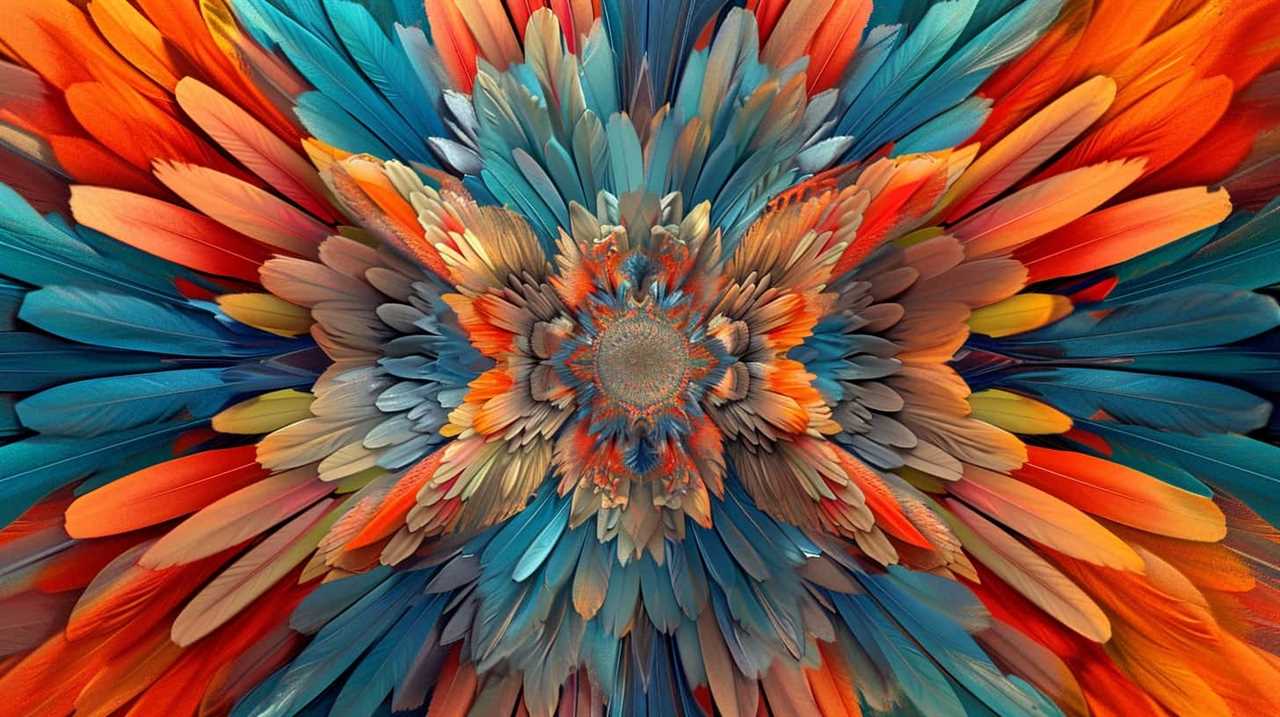
Picasso’s Artistic Impact
Throughout history, we’ve witnessed the profound impact of Pablo Picasso’s artistic genius, as he revolutionized the world of art with his innovative techniques and visionary perspectives.
Picasso’s artistic techniques, such as Cubism and collage, challenged the traditional notions of representation and perspective, paving the way for new artistic possibilities. His ability to deconstruct and reconstruct forms, to distort and fragment reality, captured the essence of the modern era.
Picasso’s influence on modern art can’t be overstated. His bold experimentation and willingness to push boundaries inspired generations of artists to break free from convention and explore new artistic territories. His revolutionary approach to art not only transformed the way we perceive the world, but also sparked a creative revolution that continues to shape the art world today.
As we delve further into the impact of art on history, it’s essential to acknowledge the contributions of other visionary artists, such as Frida Kahlo, who used art to give voice to the marginalized.

Frida Kahlo on Art as a Voice for the Marginalized
In our exploration of art’s influence in history, one can’t ignore the profound impact of Frida Kahlo’s artwork as a powerful voice for the marginalized.
Frida Kahlo’s artistic inspiration stemmed from her own experiences as a Mexican woman living with physical and emotional pain. Her paintings served as a means of empowerment for marginalized communities, particularly women, the disabled, and the indigenous. Through her art, Kahlo challenged societal norms and addressed themes of identity, gender, and class, giving a voice to those who’d been silenced. Her self-portraits, filled with symbolism and raw emotion, captured the struggles and triumphs of the marginalized, shedding light on their experiences and inviting empathy from viewers.
Kahlo’s artwork not only provided a platform for the marginalized, but also played a significant role in shaping the art world. Her unique style, influenced by Mexican folk art and surrealism, challenged traditional artistic conventions and paved the way for future generations of artists to explore their own identities and experiences through their artwork.
Transitioning into the subsequent section about Michelangelo on the permanence of art, it’s important to note how Kahlo’s art continues to resonate with audiences today, highlighting the enduring power of art to transcend time and preserve the voices of the marginalized.
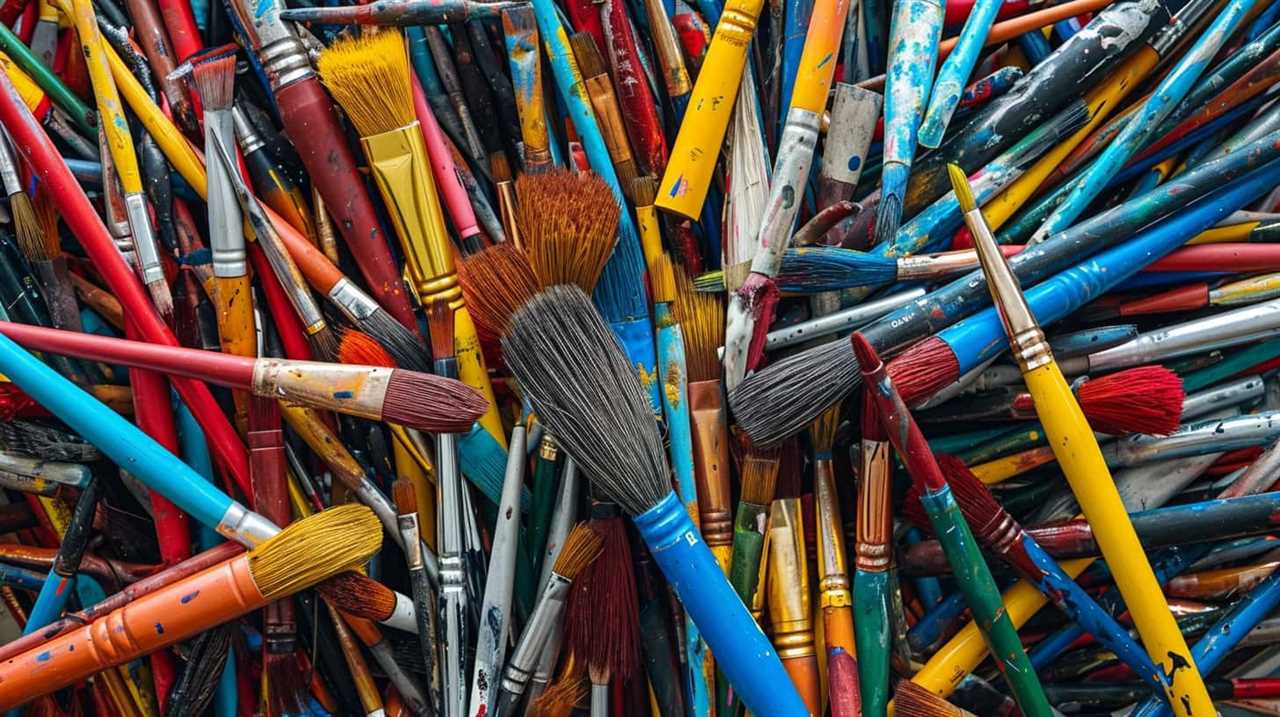
Michelangelo on the Permanence of Art
As we delve into Michelangelo’s perspective on the permanence of art, it’s crucial to acknowledge the lasting impact of Frida Kahlo’s artwork as a voice for the marginalized.
Michelangelo, renowned for his influence on sculpture, believed that art possessed an inherent permanence that transcended time. His sculptures, such as the iconic David and the Pietà, stand as testaments to this belief, as they continue to captivate audiences centuries after their creation.
To truly grasp the permanence of art, one must imagine the exquisite details and lifelike forms that Michelangelo meticulously carved into stone. Picture the smooth, marble surface of David’s body, his chiseled muscles frozen in a moment of tension and grace. Envision the delicate folds of fabric in the Pietà, the drapery cascading down the figures with an uncanny realism that defies the medium.
Furthermore, Michelangelo’s influence on sculpture can be seen in his ability to breathe life into inanimate materials. Imagine the transformation of a lifeless block of marble into a living, breathing masterpiece. Visualize the process of sculpting, the sound of the chisel striking the stone, and the sculptor’s hands guiding the creation of form and expression.

Michelangelo’s belief in the permanence of art is rooted in the idea that through sculpture, he could capture and preserve the essence of humanity. His works stand as a testament to the enduring power of art, immortalizing the beauty, emotions, and spirit of the human experience for generations to come.
Georgia O’keeffe on the Connection Between Art and Nature
We believe that Georgia O’Keeffe’s perspective on the connection between art and nature is profound and insightful. O’Keeffe, known for her iconic paintings of flowers and landscapes, saw art as a means to explore and express the spiritual and emotional dimensions of the natural world. For her, art wasn’t just a visual representation of nature; it was a way to delve deeper into the essence of existence.
O’Keeffe believed that art had the power to connect us with something greater than ourselves. She saw a spiritual dimension in nature, and through her art, she sought to capture and convey this transcendent experience. O’Keeffe’s paintings of flowers, for example, weren’t just depictions of petals and stems; they were expressions of the beauty, vitality, and delicacy of life itself.
Moreover, O’Keeffe believed that art was a reflection of the human experience. She saw in nature the same emotions, struggles, and joys that we encounter in our own lives. Through her paintings, she aimed to depict the universal human condition, using the natural world as a metaphor for our own inner landscapes.
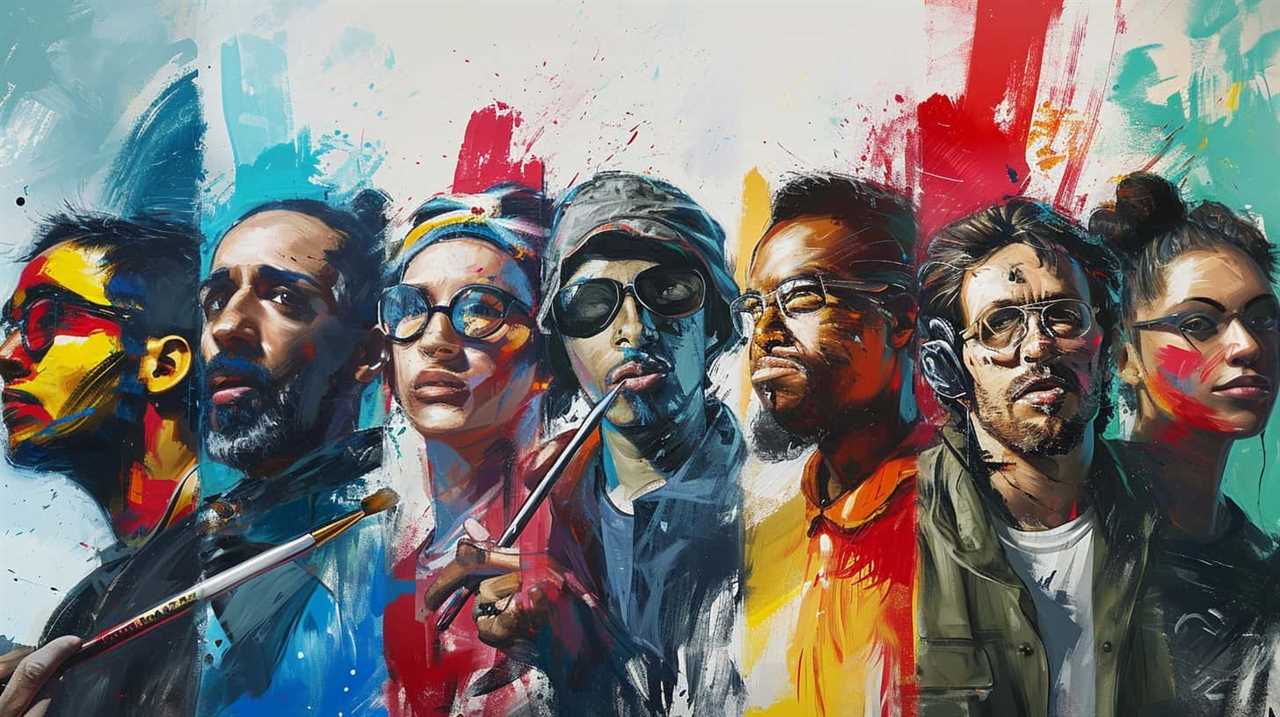
In summary, O’Keeffe’s perspective on the connection between art and nature is a testament to the power of art as a reflection of the human experience and its ability to evoke a sense of spirituality. Her profound insights continue to inspire and resonate with artists and art enthusiasts alike.
Transition: Now, let’s turn our attention to Salvador Dali and his thoughts on the surrealist movement in art.
Salvador Dali on the Surrealist Movement in Art
When considering the impact of Salvador Dali on the Surrealist movement in art, we can’t overlook the profound influence that Surrealism itself has had on the art world.
Dali’s unique artistic techniques, such as his use of dreamlike imagery and the exploration of the subconscious, have become synonymous with the Surrealist movement.

Surrealism’s ability to challenge conventional notions of reality and tap into the depths of the human psyche has forever changed the way we perceive and create art.
Dali’s Impact on Surrealism
After Salvador Dali joined the Surrealist movement, his distinctive style and innovative ideas greatly influenced the development of surrealist art. Dali’s melting clocks, featured in his iconic painting ‘The Persistence of Memory’, became a symbol of the irrational and dreamlike nature of surrealism. These distorted and melting timepieces created a sense of unease and challenged conventional notions of reality.
Dali’s influence on contemporary art can be seen in the works of artists such as Jeff Koons and Damien Hirst, who also incorporate surreal elements and explore the subconscious mind in their art. Dali’s ability to blend reality and fantasy, and his use of symbolism and dreamlike imagery, continue to inspire artists today.
His impact on surrealism paved the way for the movement’s lasting influence on art.

Surrealism’s Influence on Art
Dali’s impact on the Surrealist movement in art can be traced through his distinct style and innovative ideas, which continue to shape and influence contemporary artists.
Surrealism, as a movement, sought to explore the subconscious mind and tap into the realm of dreams. Dali’s work played a crucial role in expanding the boundaries of this exploration. His use of dream symbolism in his art was revolutionary.
Dali believed that dreams contained a wealth of hidden meanings and symbols that could reveal deep truths about the human psyche. By incorporating these dream symbols into his art, Dali created a visual language that spoke directly to the subconscious mind.
His surrealistic imagery, with its distorted forms and juxtaposition of unrelated objects, challenged the viewer’s perception and invited them to delve into the hidden recesses of their own minds.
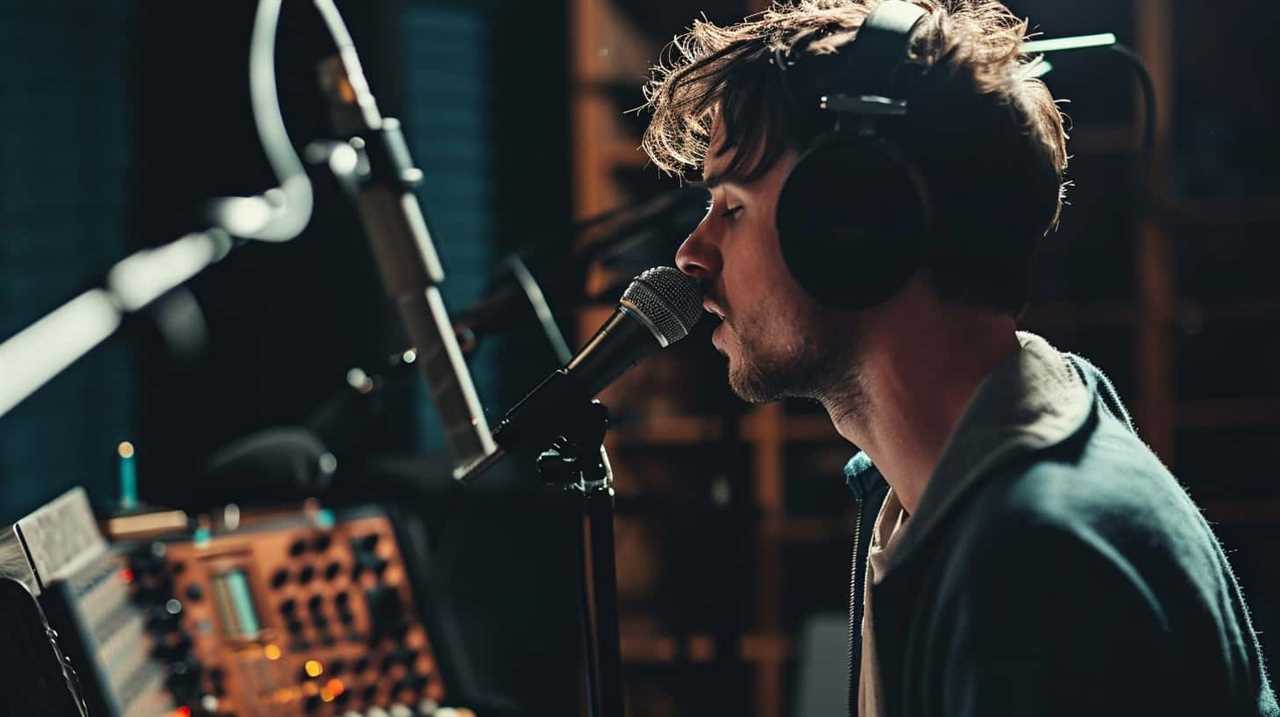
This emphasis on the subconscious and dream symbolism has had a lasting impact on the field of art, inspiring countless artists to explore their own inner worlds and push the boundaries of artistic expression.
Surrealism, through Dali’s influence, continues to engage and captivate audiences, inviting them to question reality and explore the depths of their own imagination.
Dali’s Artistic Techniques
Our exploration of Dali’s artistic techniques within the Surrealist movement in art begins with a profound understanding of his innovative approach. Dali’s artistic process involves a meticulous attention to detail and a deliberate use of symbolism in his work.
- Dali’s use of vibrant colors and exaggerated proportions creates a visually striking and surreal atmosphere that captivates the viewer’s imagination.
- His technique of juxtaposing unrelated objects and distorting their forms challenges conventional notions of reality, inviting the audience into the realm of the subconscious.
- Through his meticulous brushwork and precise rendering, Dali achieves a level of precision that adds to the dreamlike quality of his paintings.
Dali’s artistry isn’t merely a representation of the external world, but a reflection of his inner thoughts and emotions. His symbolism invites the viewer to delve deeper into the hidden meanings and explore the complexities of the human psyche.
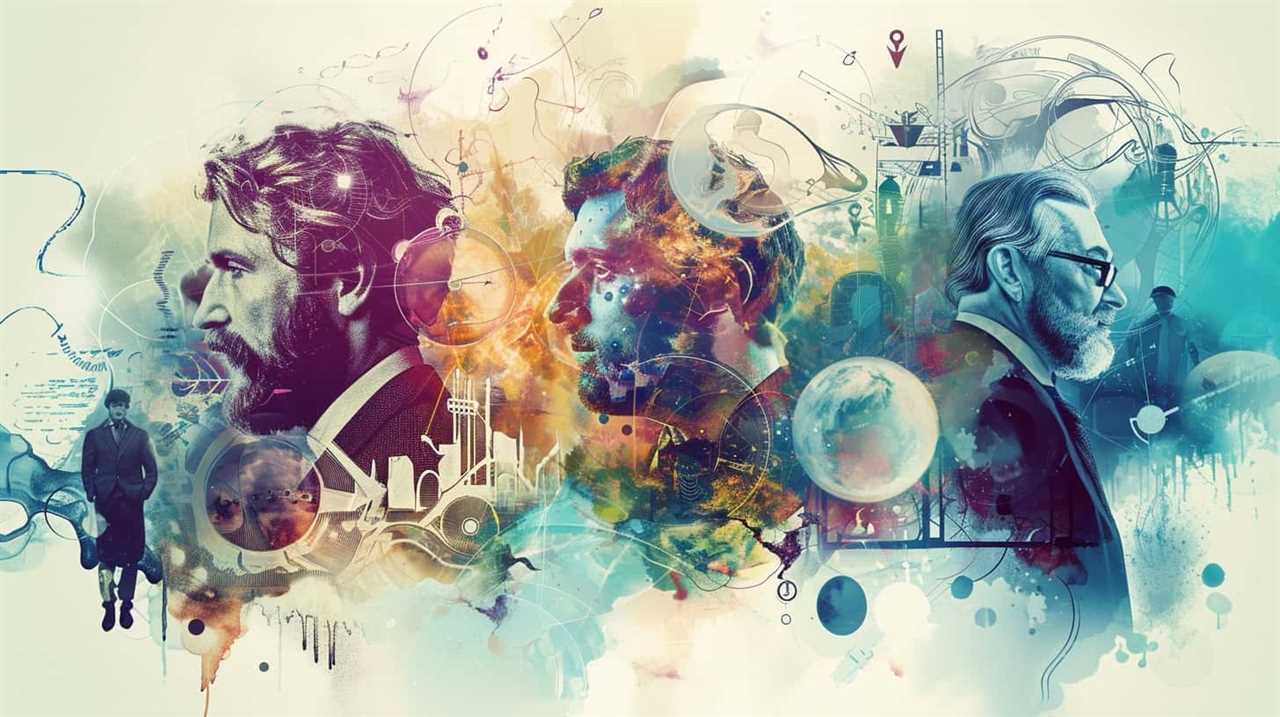
Transitioning into the subsequent section, let’s now turn our attention to Claude Monet’s perspective on the Impressionist style of painting.
Claude Monet on the Impressionist Style of Painting
Monet’s reflections on the Impressionist style of painting reveal its transformative impact on the art world. The impressionist technique, characterized by loose brushwork and emphasis on capturing the fleeting effects of light, revolutionized the way artists approached their subjects.
Monet’s artistic evolution is a testament to the power of this style. Initially influenced by the traditional art academies, Monet soon rejected their rigid rules and sought a more innovative approach. He began experimenting with capturing the essence of a scene through quick, spontaneous brushstrokes and vibrant color palettes.
This departure from the traditional methods was met with resistance from the artistic establishment at first, but the Impressionists persevered and eventually gained recognition for their groundbreaking approach. Monet’s dedication to depicting the ever-changing nature of light and its effects on the subject matter led to the creation of iconic masterpieces such as ‘Impression, Sunrise’ and ‘Water Lilies.’ His ability to capture the essence of a moment in time, conveying a sense of atmosphere and emotion, has left an indelible mark on the art world.

The Impressionist style, as exemplified by Monet, continues to inspire and influence artists to this day, reminding us of the enduring power of artistic innovation.
Jackson Pollock on Abstract Expressionism in Art
Moving forward, we frequently encounter the influential thoughts of Jackson Pollock on the impact of Abstract Expressionism in the world of art. Pollock, known for his unique artistic process, played a crucial role in shaping the trajectory of contemporary art through his innovative and avant-garde approach.
When we delve into Pollock’s artistic process, we envision a chaotic dance between the artist and his canvas. Through his famous drip technique, Pollock would fling, pour, and splatter paint onto the canvas, allowing his emotions and subconscious to guide his movements. This technique not only emphasized the physicality of the artistic process but also became a metaphor for the unconscious mind, bridging the gap between the artist and the viewer.
Abstract Expressionism’s influence on contemporary art can be observed through its transformative power. It challenged traditional notions of representation and realism, paving the way for artists to explore their innermost thoughts and emotions. The movement encouraged artists to break free from conventions and express themselves authentically, laying the foundation for future artistic movements such as Minimalism and Conceptual Art.

As we transition into the subsequent section about Andy Warhol on Pop Art and consumer culture, we’ll witness another significant shift in the art world—a movement that responded to the growing influence of mass media and consumerism.
Andy Warhol on Pop Art and Consumer Culture
When considering Andy Warhol’s commentary on consumerism and the impact of his Pop Art movement, one can’t overlook the significance of his work in critiquing society.
Warhol’s iconic pieces, such as his Campbell’s Soup Cans and Marilyn Monroe portraits, challenged traditional notions of high art by elevating everyday objects and celebrities to the status of art.
Through his bold use of vibrant colors and repetition, Warhol not only captured the essence of consumer culture but also highlighted its pervasive influence on society.

His art served as a mirror, reflecting the mass production and commodification of goods, while also prompting viewers to question the true value and meaning behind these cultural artifacts.
Warhol’s Commentary on Consumerism
We believe that Andy Warhol’s commentary on consumerism, specifically his views on pop art and consumer culture, has had a significant impact on the art world.
Warhol’s influence on contemporary art can be seen in the way he challenged traditional notions of beauty and elevated everyday objects and consumer products to the status of high art.
His iconic images of Campbell’s soup cans and Coca-Cola bottles, for example, not only captured the essence of American consumer culture but also questioned the boundaries between art and commerce.
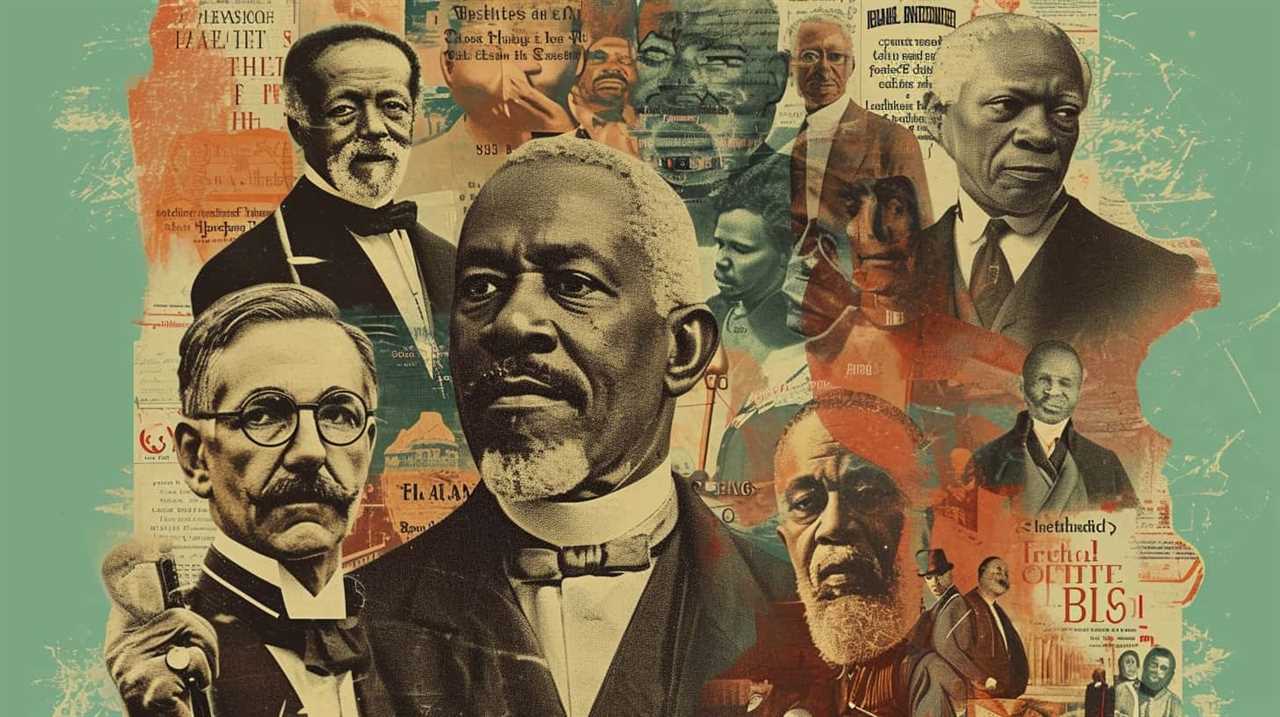
Warhol’s work highlighted the commercialization of art, inviting viewers to critically examine the relationship between art, consumerism, and popular culture.
Through his art, Warhol sparked conversations about the value of art in a consumer-driven society and continues to inspire artists to explore similar themes today.
Impact of Pop Art
The impact of pop art on art and consumer culture can be seen through the influential contributions of Andy Warhol. Warhol, a leading figure in the pop art movement, explored the relationship between art and consumer culture in his work. He embraced mass production and popular culture, elevating everyday objects and celebrities to the status of art.
Warhol’s iconic images of soup cans, Marilyn Monroe, and Elvis Presley challenged traditional notions of high art and brought art into the realm of consumer culture. His use of bold colors, repetition, and commercial techniques reflected the influence of advertising and media on society.
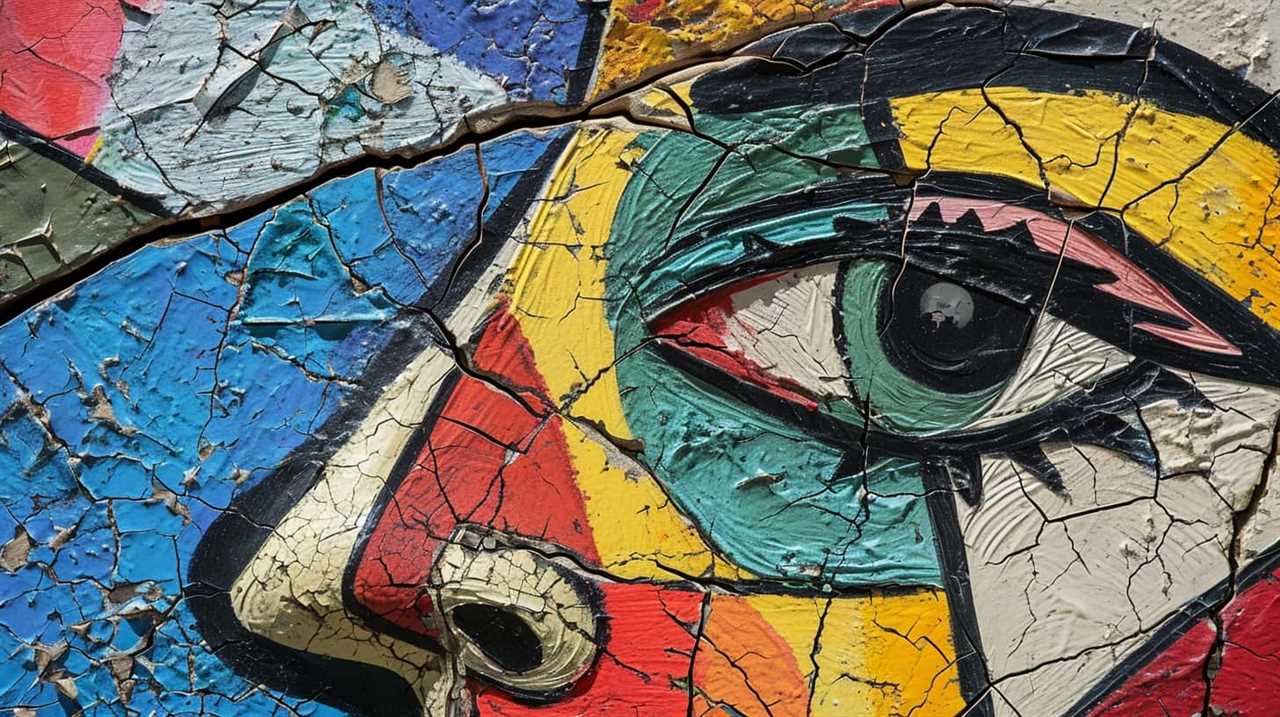
Warhol’s art not only captured the essence of popular culture but also questioned the boundaries between art and commerce, leaving a lasting impact on the art world and shaping our understanding of the relationship between art and consumer culture.
Art as Social Critique
Continuing from the previous subtopic on the impact of pop art, Andy Warhol’s exploration of the relationship between art and consumer culture is exemplified through his use of bold colors, repetition, and commercial techniques.
Warhol’s art serves as a powerful form of social critique, challenging the notion of art as mere decoration and emphasizing its potential as a tool for political commentary and protest. Through his iconic works such as the Campbell’s Soup Cans and Marilyn Monroe portraits, Warhol confronts the commodification of art and consumer culture, exposing the ways in which society values and consumes both.
The bold colors and repetitive imagery in his works create a vivid and striking visual experience, forcing the audience to confront the overwhelming presence of consumerism in their lives. Warhol’s art serves as a powerful reminder of the influence and impact of consumer culture on society, while also questioning the value and authenticity of art in a world driven by profit and consumption.

Banksy on Street Art and Activism
In our exploration of art’s influence in history, we delve into Banksy’s perspective on the intersection of street art and activism. Banksy, a renowned street artist known for his anonymous identity, has made significant contributions to both the art world and political activism through his thought-provoking and socially conscious work. Street art, with its impact on urban landscapes, provides an unconventional platform for artists like Banksy to express their views on societal issues and challenge the status quo.
Banksy’s art often serves as a form of social commentary, shedding light on political and social injustices. His murals, stencils, and installations have become iconic symbols of resistance and dissent, capturing the attention of viewers worldwide. By utilizing public spaces as his canvas, Banksy aims to engage with a broader audience and spark conversations about pressing issues. Through his art, he’s addressed topics such as poverty, war, consumerism, and the environment, provoking viewers to question the prevailing norms and systems in society.
Street art’s role in political activism can’t be underestimated. It has the power to disrupt the urban landscape, challenging the dominant narratives and creating spaces for marginalized voices to be heard. Banksy’s work exemplifies this, as he uses his art to expose the contradictions and hypocrisies of those in power. By placing his art in public spaces, Banksy forces viewers to confront uncomfortable truths and consider alternative perspectives.
How Have Historical Art Influences Shaped Modern Art’s Purpose?
The best quotes on modern art purpose from historical artists like Pablo Picasso and Vincent Van Gogh have greatly influenced the direction of modern art. Their innovative approaches to color, form, and emotion have shaped the purpose of modern art, inspiring artists to push boundaries and evoke powerful emotions through their work.
Yoko Ono on the Conceptual Nature of Art
Now let’s explore Yoko Ono’s thoughts on the conceptual nature of art and its impact on history.
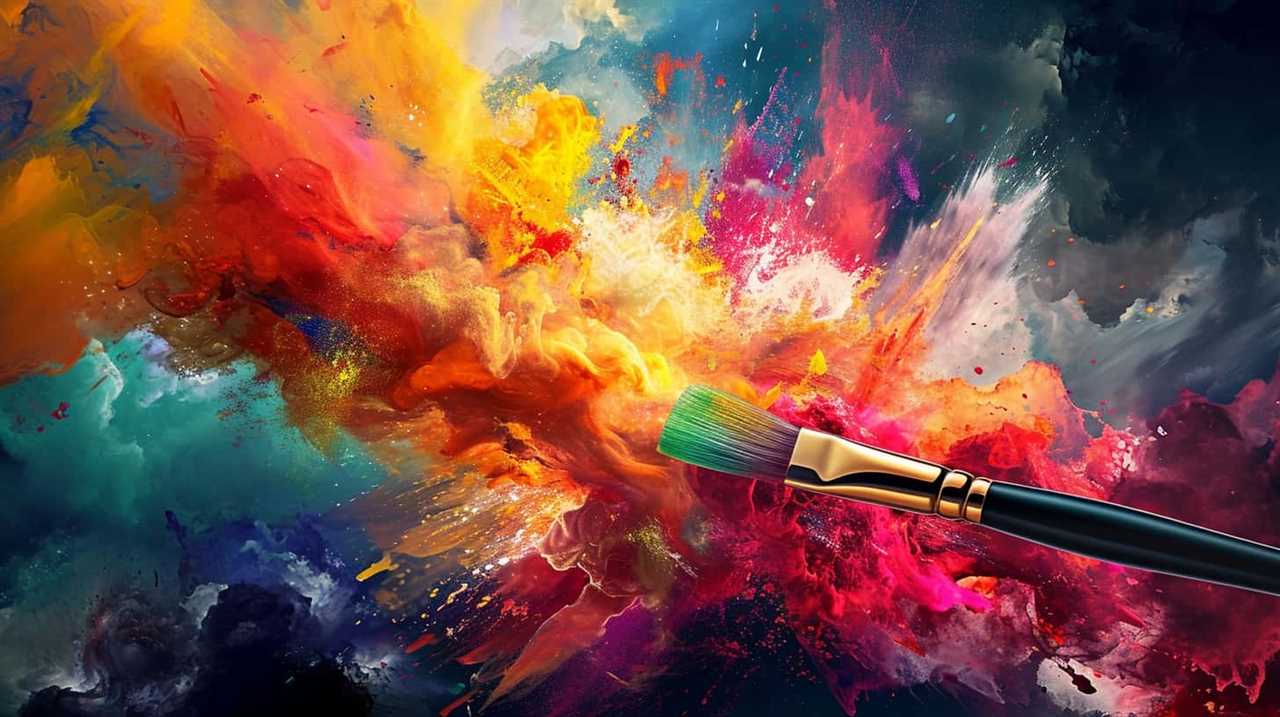
Yoko Ono, a prominent figure in the avant-garde movements of the 1960s and 1970s, has been a significant contributor to the world of conceptual art. Her innovative and thought-provoking works challenge traditional notions of art and push the boundaries of artistic expression.
When considering Yoko Ono’s views on the conceptual nature of art, several key ideas come to mind:
- Conceptual art as a catalyst for introspection: Ono believes that conceptual art has the power to engage viewers in a deeper level of self-reflection. Through unconventional artistic approaches, she encourages audiences to question their preconceived notions and contemplate the underlying meanings behind her works.
- Breaking down the barriers between art and life: Ono’s work blurs the line between art and everyday life, highlighting the interconnectedness of these two realms. By incorporating mundane objects and ordinary experiences into her art, she challenges the notion of what constitutes art and invites viewers to reconsider their perspective on the world around them.
- The transformative potential of art: Ono sees art as a catalyst for social change and personal transformation. By presenting viewers with new perspectives and alternative ways of thinking, she hopes to inspire individuals to challenge societal norms and envision a better future.
Through her innovative approach to conceptual art, Yoko Ono has made a lasting impact on the art world, continuously pushing boundaries and challenging conventions. Her work serves as a testament to the power of art to provoke thought, ignite discourse, and shape our understanding of the world.
Frequently Asked Questions
How Did Leonardo Da Vinci Believe Art Had the Power to Influence Society?
Leonardo da Vinci believed that art had the power to shape society. He understood the impact of art on cultural and societal norms, recognizing its ability to inspire, provoke thought, and challenge the status quo.
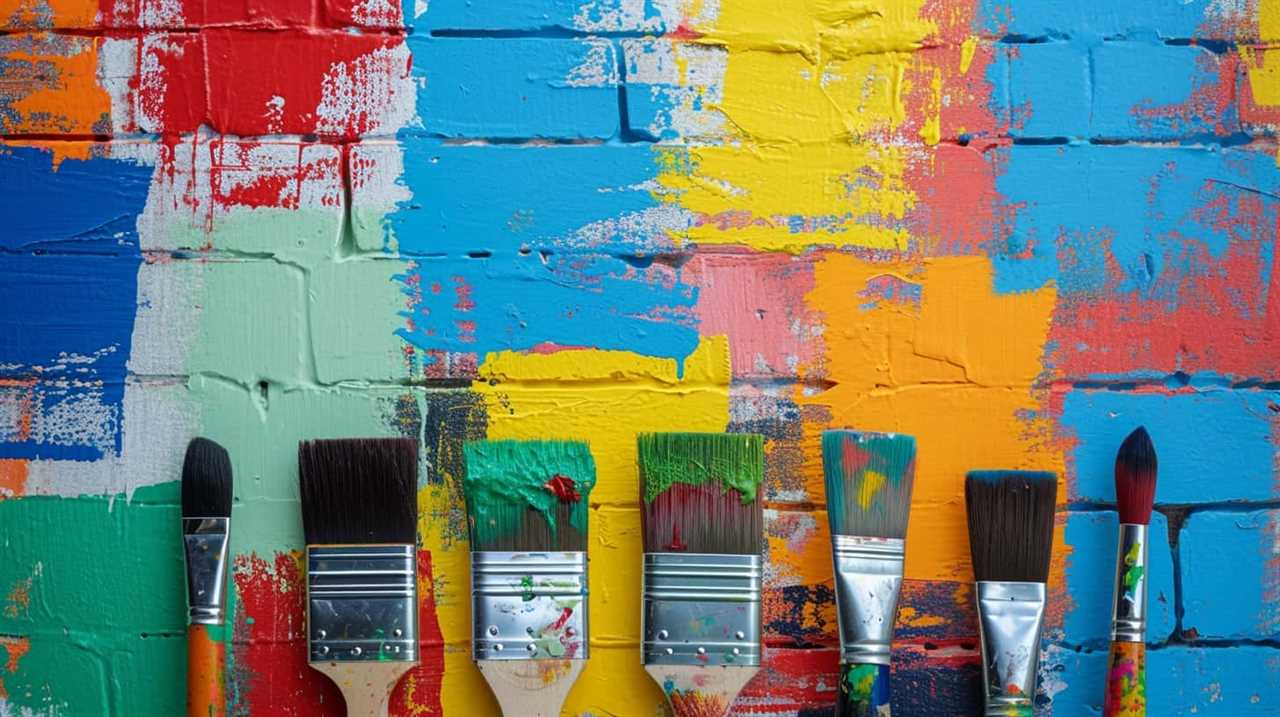
What Specific Emotions Did Vincent Van Gogh Believe Art Could Evoke in People?
Art has the power to evoke a myriad of emotions in people. Vincent Van Gogh believed it could elicit profound feelings of joy, sorrow, and even despair. Such emotional impact is a testament to art’s influence on society.
How Did Pablo Picasso View Art as a Revolutionary Force?
Pablo Picasso viewed art as a revolutionary force by challenging traditional norms and pushing boundaries. His perspective on the power of art to provoke social change and inspire new ways of thinking has left a lasting impact on the art world, shaping Picasso’s artistic legacy.
In What Ways Did Frida Kahlo See Art as a Tool for Marginalized Voices?
Frida Kahlo believed that art had the power to amplify marginalized voices and challenge societal norms. Through her vibrant and introspective self-portraits, she conveyed the struggles and resilience of those often overlooked or silenced.
Why Did Michelangelo Emphasize the Permanence of Art in His Work?
In exploring Michelangelo’s perspective on the timeless nature of art and its impact on society, we can analyze how he emphasized the permanence of art in his work. This highlights the role of art as a tool for empowerment and representation in marginalized communities.
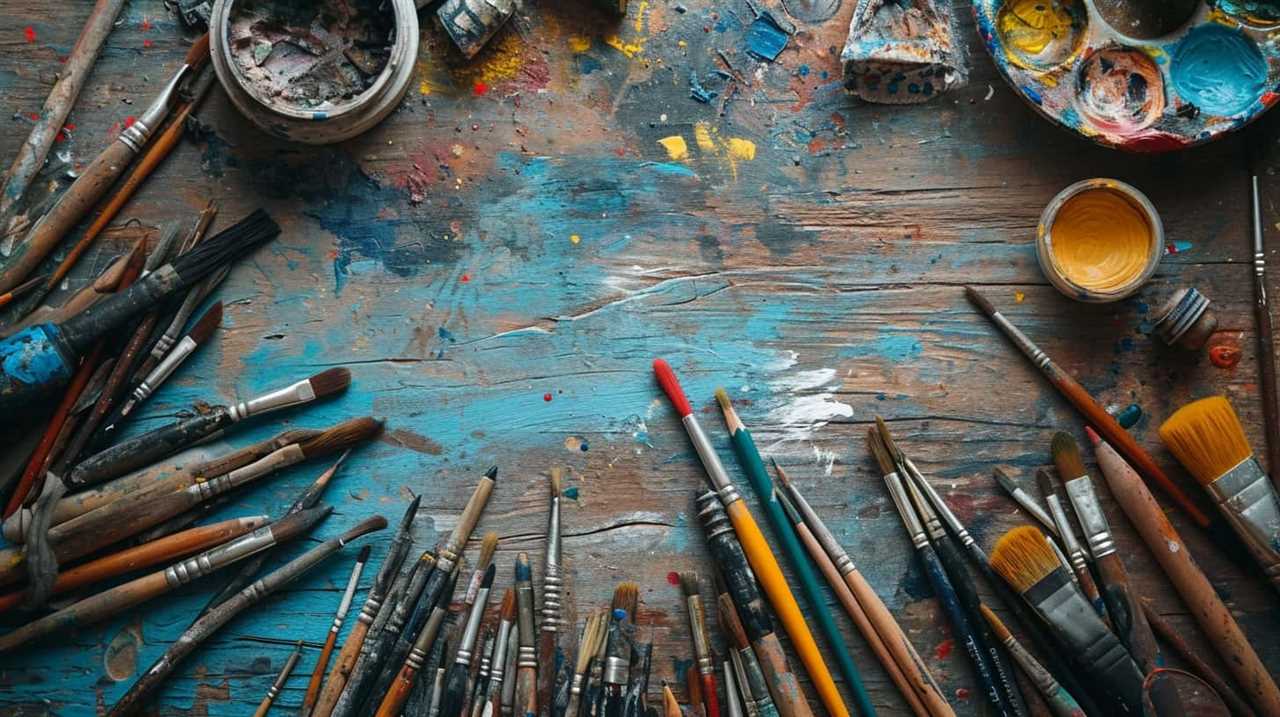
Conclusion
In conclusion, these iconic quotes highlight the profound influence of art throughout history.
From Da Vinci’s recognition of art’s power to Van Gogh’s emphasis on its emotional impact, artists have consistently understood the transformative potential of their work.
Picasso and Kahlo further demonstrate how art can challenge societal norms and give voice to the marginalized.
Michelangelo’s belief in the permanence of art reminds us of its enduring legacy, while Pollock, Warhol, Banksy, and Ono exemplify the diverse forms and purposes that art can take.
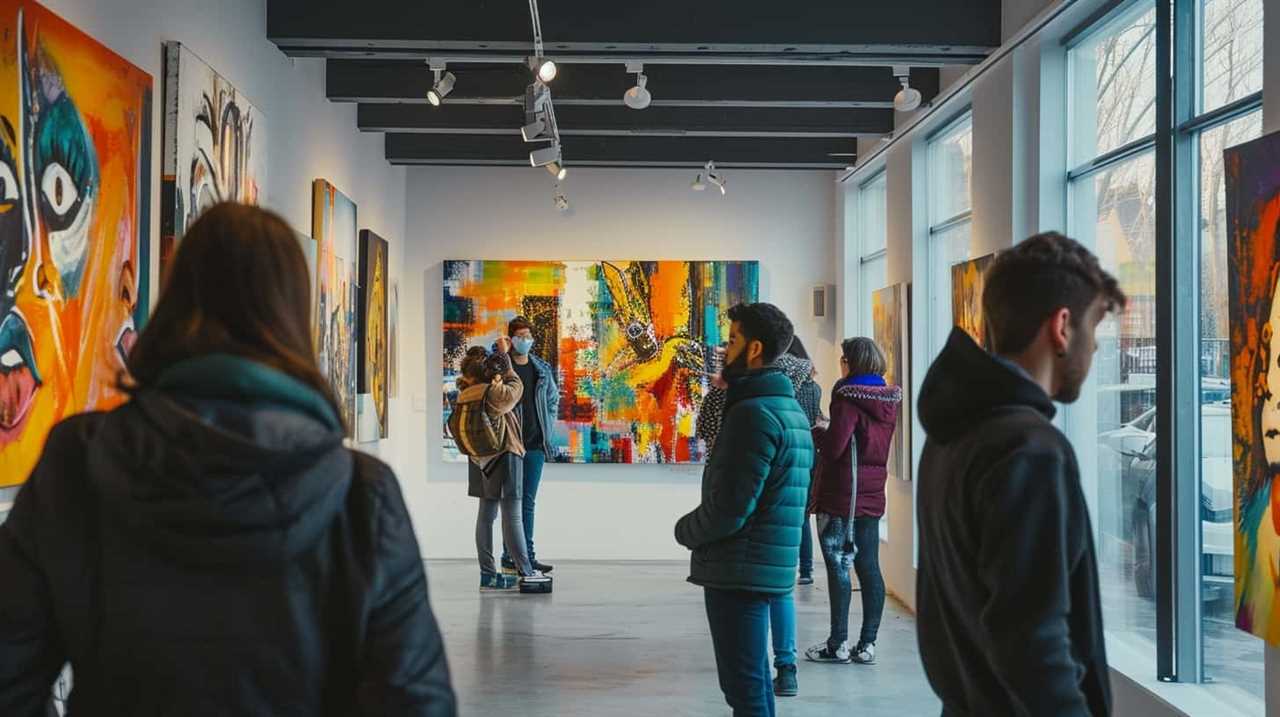
Through their words, we gain insight into the complex and multifaceted nature of art’s influence in shaping our world.
Lauren’s talent in writing is matched by her passion for storytelling. Her love for books and deep understanding of culture and entertainment add a distinct flavor to her work. As our media and press contact, Lauren skillfully bridges the gap between afterQuotes and the broader media landscape, bringing our message to a wider audience.




